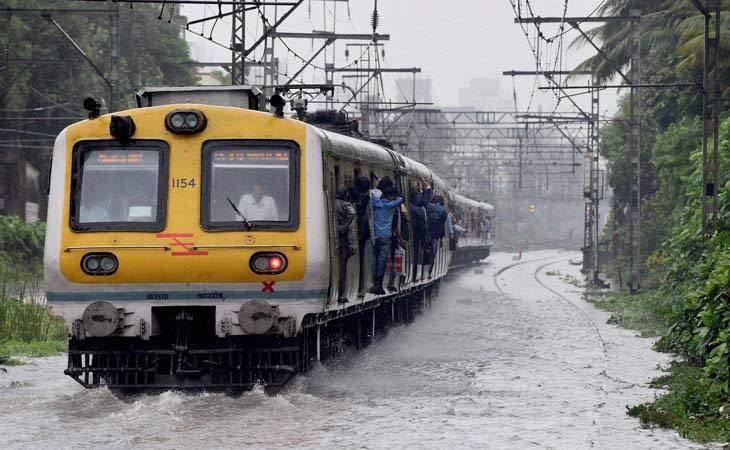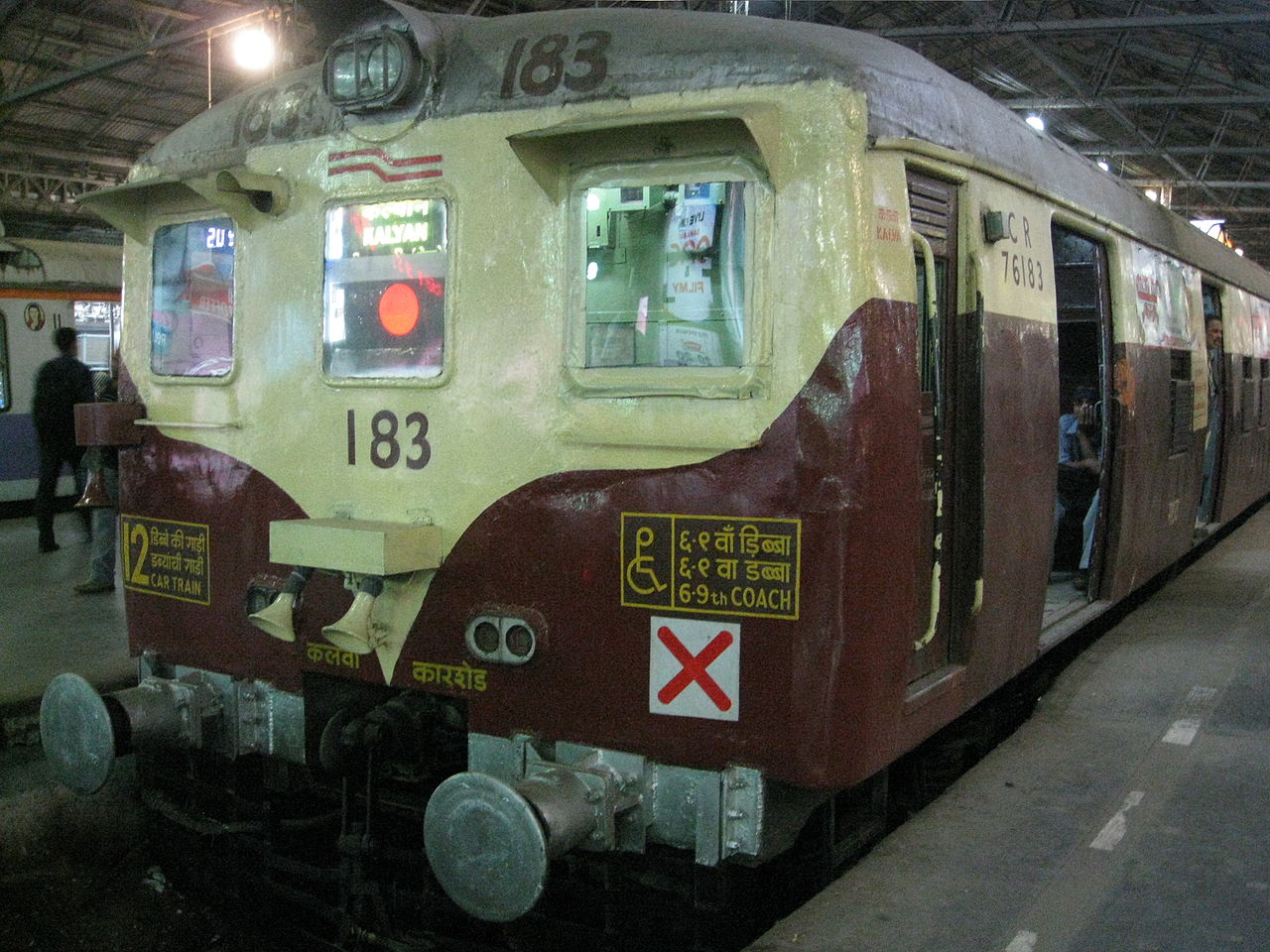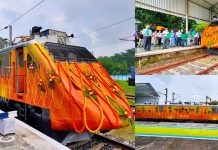Mumbai Suburban Railway consists of exclusive inner suburban railway lines augmented by commuter rail on main lines serving outlying suburbs to serve the Mumbai Metropolitan Region.
Spread over 465 kilometres (289 mi), the suburban railway operates 2,342 train services and carries more than 7.5 million commuters daily.
Mumbai Suburban Railway is the second largest suburban rail network in terms of route length after Kolkata.
What are some lesser known facts about Mumbai Suburban Railway?
1. The Mumbai suburban railway system is spread over 465 km
That is more than the distance between Mumbai to Pune and back.
Mumbai local train services don’t just connect the city to its suburbs they also connect several townships that stand on the fringes of the city.
2. The Mumbai suburban railway operates 2,342 train services
Mumbai local trains are the primary mode of transport for hundreds and thousands of people who travel for as many as five hours every day to and from work.
The city’s bus services — BEST or the Brihanmumbai Electric Supply and Transport Company — has been reporting losses for several years now and their long-distance connectivity is relatively limited as compared to the suburban local trains.
With the city flooding every year with the lightest showers, the train services are often the last resort for most Mumbaikars.
3. It carries more than 7.5 million commuters daily
That is more than five times the population of Estonia, ten times the population of Bhutan and just a little less than the population of Switzerland.
4. The railway tracks are silent only for about 90 minutes a day
The Mumbai suburban railway system sleeps for a little more than an hour and a half every day.
The first train leaves Western railway’s Churchgate station at 4.15 am; the last train reaches Borivali at 2.05 am.
On the Central line, the first train leaves Mumbai Chhatrapati Shivaji Terminus at 4.12 am and the last train chugs into Karjat at 2.45 am.
5. Mumbai suburban railway system has four major corridors
The western line runs for a little over 120 km from Churchgate in the south to Dahanu Road in the north
The central line runs from CST to Kalyan (54 km), which bifurcates into two lines leading to Kasara (an additional 67 km from Kalyan) on the Nashik route and Khopoli (an additional 61 km from Kalyan) on the Pune route. That is a total of 182 km.
The Harbour line runs between CST to Andheri on the Western line and Panvel (49 km) in Navi Mumbai.
And the Trans-Harbour Line, which is the youngest of the four connects Thane along the Central line to Panvel in Navi Mumbai.
If that hasn’t boggled your mind, there’s also a line that connects Vasai Road on the Western line to Diva Junction on the Central line to Panvel on the Harbour line. Go figure!

6. Without the Mumbai local trains, we’d go hungry!
The famed dabbawallahs of Mumbai take the train every day, delivering hundreds and thousands of lunch boxes without fail.
We could tell you about their flawless delivery system but we suspect you know that already.
7. Not even terrorists could shut it down for long
It took all of three hours for the trains to start running again after the infamous 2006 serial blasts along the suburban railway line.
At first the services were skeletal but they resumed completely under 16 hours.
The suburban fleet consists of 12 and 15-coach rakes. There are two classes of travel, including first class. The first class fare is approximately 12 times more expensive than second class, and therefore tends to be less crowded during the non rush hours, though at times it is equally or even more crowded than the general compartments during the rush Hour. First class compartments also have slightly better seats than second class. Because women can travel separately, there are four types of accommodation, termed ‘compartments’:
a. General compartment also called gent’s second class or simply second class as the majority of passengers in these compartments are men. The compartment is open to women and children as well.
b. General first class Again commonly known as gent’s first class or simply first class, since majority population is men. Women and children can also board this compartment. The coach is designated by red and yellow slant stripes. The location of the same is designated by colouring the platform walls with similar stripes.

c. Ladies’ compartment commonly known as ladies’ second class. This compartment is reserved solely for females, however male children up to the age of 13 can travel in this compartment. Men are not allowed to travel, and may face a penalty. Some of the coaches of ladies compartments are open to general public between 23:15 and 06:30. These are indicated by a note near the doors of the compartments. The coach is designated by green and yellow slant stripes. The location of the same is designated by colouring the platform walls with similar stripes.
d. Ladies first class is reserved solely for females, however male children up to the age of 13 can travel in this compartment. Men are not allowed to travel, and may face a penalty. Some of the coaches of ladies compartments are open to general public between 23:15 and 06:30. These are indicated by a note near the doors of the compartments. The coach is designated by red and yellow slant stripes. The location of the same is designated by colouring the platform walls with similar stripes. This compartment is often adjacent to the ladies compartment.
e. Handicap and cancer patients’ compartment for people with disabilities or cancer. On a platform, one can locate these by signs or by following a ‘Beep-Beep-Beep’ sound indicator for the visually impaired. These coaches are open to all the genders. One needs a valid certificate of disability to board the compartment. Failure to do so may result in a penalty.
f. Senior citizens special coach is reserved for passengers above the age of 60. These coaches are open to all the genders.
g. Luggage compartment – heavy goods and luggage can be transported using the compartments specially designed and reserved for this purpose.In 2016, the Indian Railways manufactured an AC local train for the smooth and comfortable journey of the commuters.(particularly for hot and humid summer season.).This AC local train is manufactured at Kapurthala Coach factory, Chennai.It is fully with new added facilities.
h. Ac trains – runs from Virar to Andheri, Ac trains are fast locals and started their run at 1 January 2018.



















